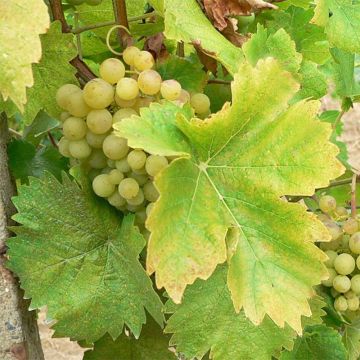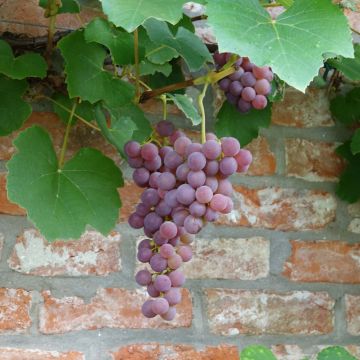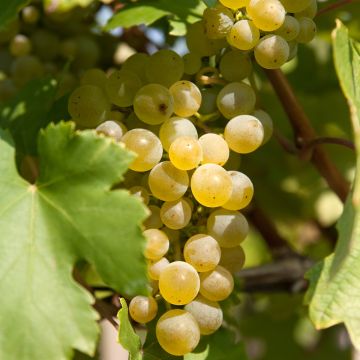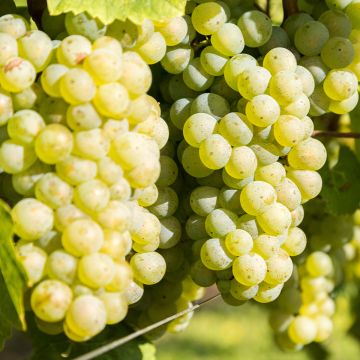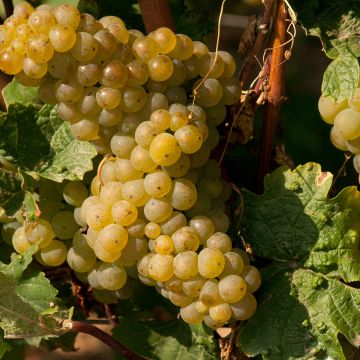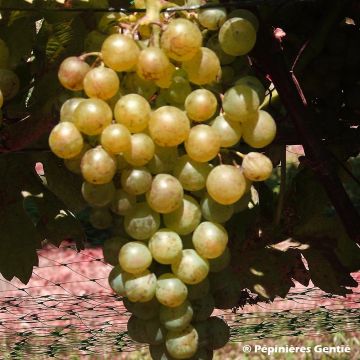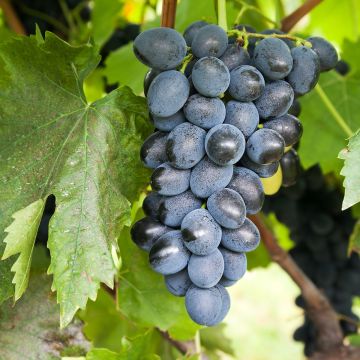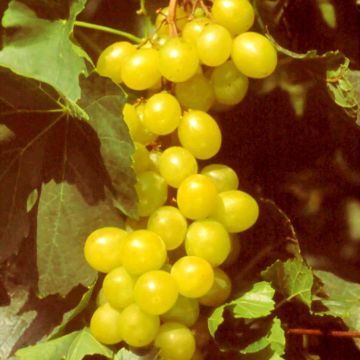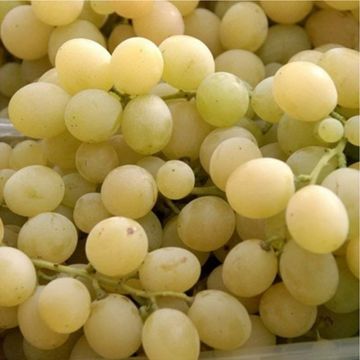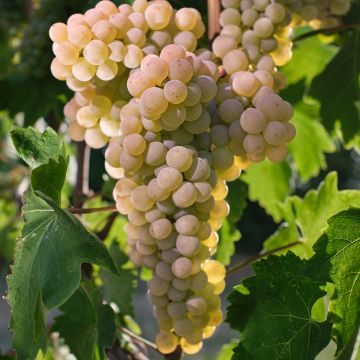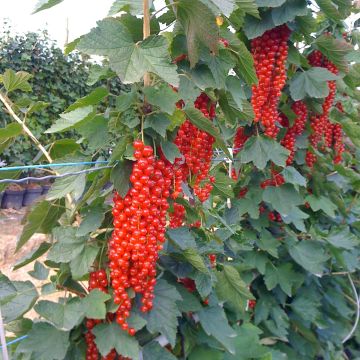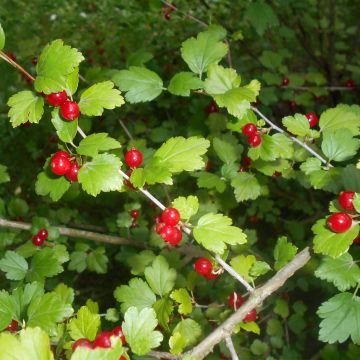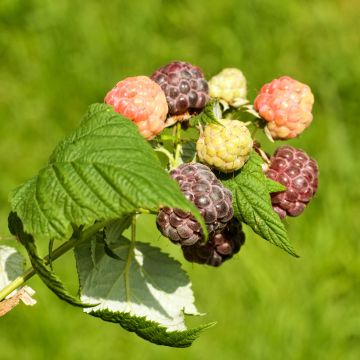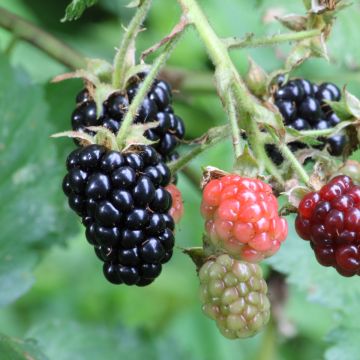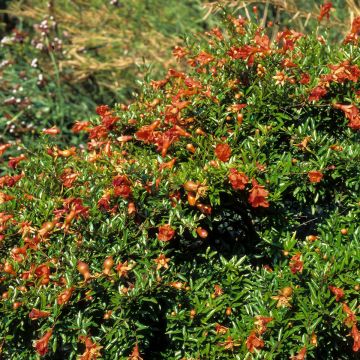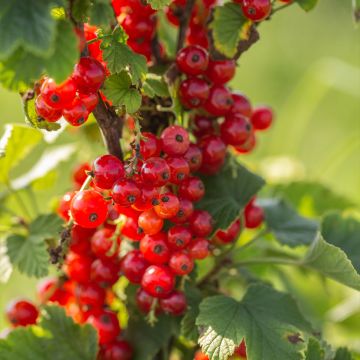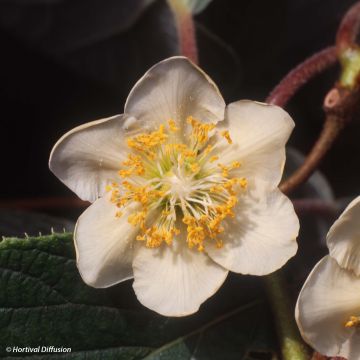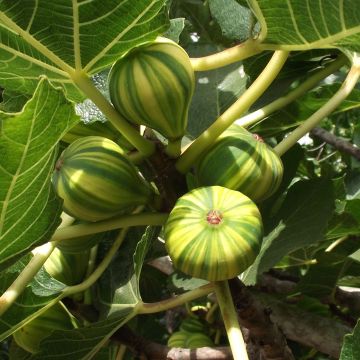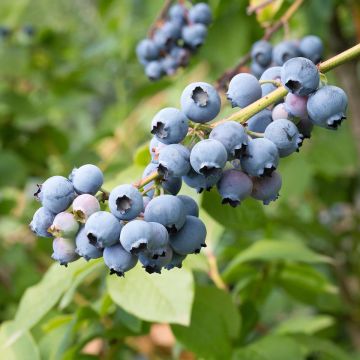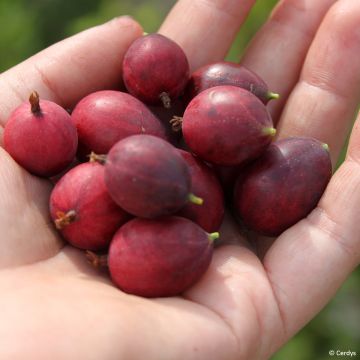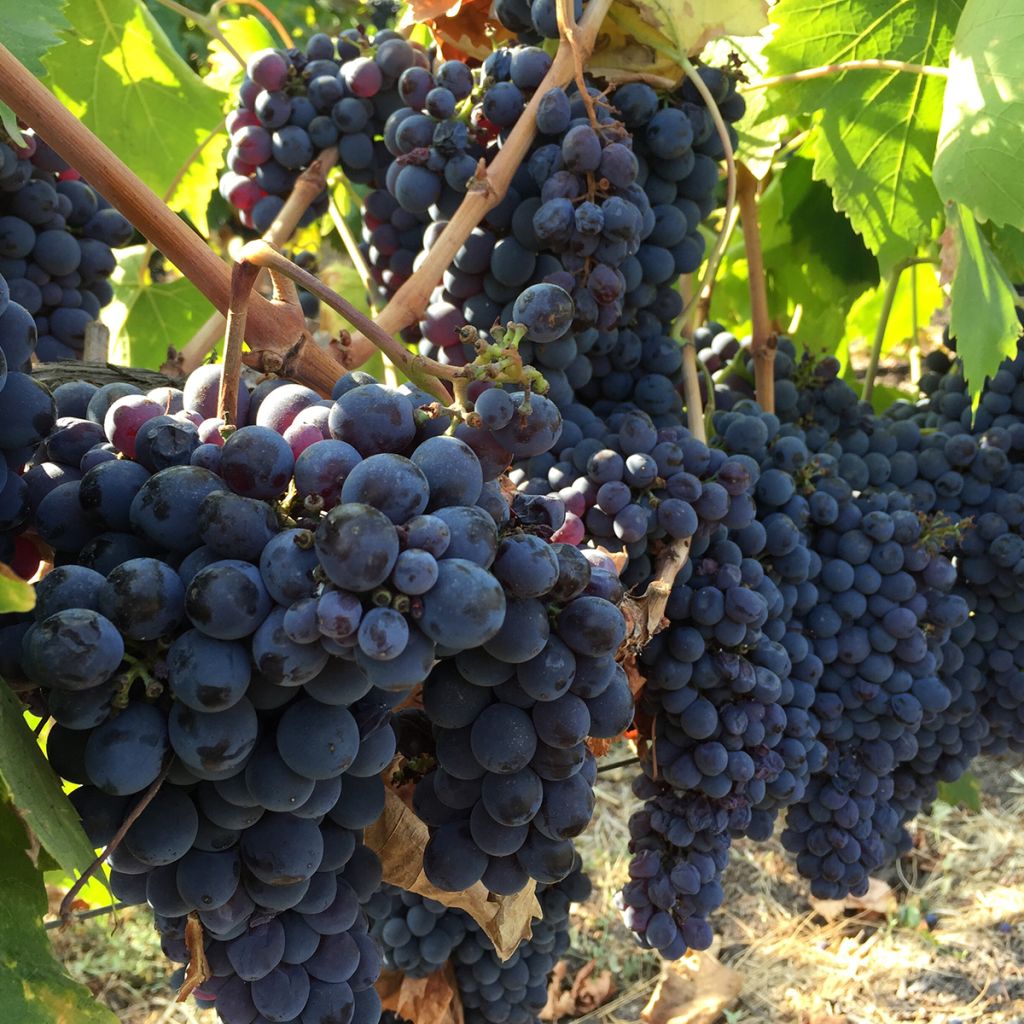

Vitis vinifera Leopoldo - Grape vine
Vitis vinifera Leopoldo - Grape vine
Vitis vinifera Leopoldo
Grapevine, Common Grape Vine, European Grape, Wine Grape
This item cannot be shipped to the selected country
Oversize package delivery charge from €6.90
More information
Schedule delivery date,
and select date in basket
This plant carries a 6 months recovery warranty
More information
We guarantee the quality of our plants for a full growing cycle, and will replace at our expense any plant that fails to recover under normal climatic and planting conditions.
Oversize package: home delivery by special carrier from €6.90 per order..
Express home delivery from €8.90.
Description
Vitis vinifera 'Leopoldo' is appreciated for its conical and compact clusters of large round berries with black-blue skin and sweet, crunchy, and juicy flesh. It is an ideal variety for table consumption. Each cluster weighs an average of 300 to 400 g. Harvesting takes place between late August and early September, depending on the region. This hardy and resistant vine thrives in the sun in well-drained soil. Train it against a wall in a sunny spot or let it run on a trellis or pergola.
Like all grapevines, Vitis vinifera 'Leopoldo' belongs to the Vitaceae family. The vine is a sarmentous, climbing bush that forms a trunk over time, often knotty and twisted. Its long stems, or canes, bear green, dissected, and toothed leaves. They offer beautiful colours in autumn, ranging from yellow to orange. In spring (May-June), it has small green flowers grouped in rather dense clusters.
'Leopoldo' is a variety derived from the 'Alphonse de Lavallée' variety, selected in Belgium in 1925 by Emile Denaeyer. It is a productive and self-fertile variety, which produces medium to large, rather conical and dense clusters. The berries are spherical, quite large, dark blue, and covered with bloom. The pulp is pleasant to taste, crunchy, juicy, and sweet. The grapes are mainly intended for fresh consumption, but they can also be used in fruit salads, pies, juices, or cooked as a meat accompaniment.
Like all table grapes, plant your 'Leopoldo' vine in a sunny spot, trained against a wall, on a trellis, or a pergola. Planting in a pot on a terrace is also possible. This decorative and delicious plant will find a place in all gardens. Pair the 'Leopoldo' black fruit vine with the 'Lilla' variety with white-green fruit to vary flavours and colours.
Report an error about the product description
Plant habit
Fruit
Flowering
Foliage
Botanical data
Vitis
vinifera
Leopoldo
Vitaceae
Grapevine, Common Grape Vine, European Grape, Wine Grape
Cultivar or hybrid
Other Grapevines
Planting and care
The 'Leopoldo' Vine thrives in the sun in any well-drained soil, even poor ones. It hates stagnant moisture. Plant it in well-worked soil enriched with organic fertiliser or compost. Once established, the vine can withstand summer drought. It can tolerate temperatures as low as -14°C for short periods and enjoys long hot summers for good fruiting. Train your vine against a wall or let it run on a trellis or pergola.
In spring, remove sterile, weak, or misplaced shoots to redirect all sap to the fruit-bearing canes. Once the berries have formed, prune again, leaving 2 or 3 leaves above each cluster. Take the opportunity to remove excess foliage. To avoid exhausting your vine, leave one cluster per shoot in the first year, then two in the second year, and so on. These spring and summer prunings are called fruiting prunings. Their purpose is to obtain fuller clusters and larger berries. In winter (outside the frost period), shorten the canes that produced fruit the previous year.
To prevent powdery mildew and downy mildew, treat your vine in spring and during the summer with Bordeaux mixture and/or sulphur powder, especially if you live in a rainy region.
Planting period
Intended location
Care
This item has not been reviewed yet - be the first to leave a review about it.
Berries
Haven't found what you were looking for?
Hardiness is the lowest winter temperature a plant can endure without suffering serious damage or even dying. However, hardiness is affected by location (a sheltered area, such as a patio), protection (winter cover) and soil type (hardiness is improved by well-drained soil).

Photo Sharing Terms & Conditions
In order to encourage gardeners to interact and share their experiences, Promesse de fleurs offers various media enabling content to be uploaded onto its Site - in particular via the ‘Photo sharing’ module.
The User agrees to refrain from:
- Posting any content that is illegal, prejudicial, insulting, racist, inciteful to hatred, revisionist, contrary to public decency, that infringes on privacy or on the privacy rights of third parties, in particular the publicity rights of persons and goods, intellectual property rights, or the right to privacy.
- Submitting content on behalf of a third party;
- Impersonate the identity of a third party and/or publish any personal information about a third party;
In general, the User undertakes to refrain from any unethical behaviour.
All Content (in particular text, comments, files, images, photos, videos, creative works, etc.), which may be subject to property or intellectual property rights, image or other private rights, shall remain the property of the User, subject to the limited rights granted by the terms of the licence granted by Promesse de fleurs as stated below. Users are at liberty to publish or not to publish such Content on the Site, notably via the ‘Photo Sharing’ facility, and accept that this Content shall be made public and freely accessible, notably on the Internet.
Users further acknowledge, undertake to have ,and guarantee that they hold all necessary rights and permissions to publish such material on the Site, in particular with regard to the legislation in force pertaining to any privacy, property, intellectual property, image, or contractual rights, or rights of any other nature. By publishing such Content on the Site, Users acknowledge accepting full liability as publishers of the Content within the meaning of the law, and grant Promesse de fleurs, free of charge, an inclusive, worldwide licence for the said Content for the entire duration of its publication, including all reproduction, representation, up/downloading, displaying, performing, transmission, and storage rights.
Users also grant permission for their name to be linked to the Content and accept that this link may not always be made available.
By engaging in posting material, Users consent to their Content becoming automatically accessible on the Internet, in particular on other sites and/or blogs and/or web pages of the Promesse de fleurs site, including in particular social pages and the Promesse de fleurs catalogue.
Users may secure the removal of entrusted content free of charge by issuing a simple request via our contact form.
The flowering period indicated on our website applies to countries and regions located in USDA zone 8 (France, the United Kingdom, Ireland, the Netherlands, etc.)
It will vary according to where you live:
- In zones 9 to 10 (Italy, Spain, Greece, etc.), flowering will occur about 2 to 4 weeks earlier.
- In zones 6 to 7 (Germany, Poland, Slovenia, and lower mountainous regions), flowering will be delayed by 2 to 3 weeks.
- In zone 5 (Central Europe, Scandinavia), blooming will be delayed by 3 to 5 weeks.
In temperate climates, pruning of spring-flowering shrubs (forsythia, spireas, etc.) should be done just after flowering.
Pruning of summer-flowering shrubs (Indian Lilac, Perovskia, etc.) can be done in winter or spring.
In cold regions as well as with frost-sensitive plants, avoid pruning too early when severe frosts may still occur.
The planting period indicated on our website applies to countries and regions located in USDA zone 8 (France, United Kingdom, Ireland, Netherlands).
It will vary according to where you live:
- In Mediterranean zones (Marseille, Madrid, Milan, etc.), autumn and winter are the best planting periods.
- In continental zones (Strasbourg, Munich, Vienna, etc.), delay planting by 2 to 3 weeks in spring and bring it forward by 2 to 4 weeks in autumn.
- In mountainous regions (the Alps, Pyrenees, Carpathians, etc.), it is best to plant in late spring (May-June) or late summer (August-September).
The harvesting period indicated on our website applies to countries and regions in USDA zone 8 (France, England, Ireland, the Netherlands).
In colder areas (Scandinavia, Poland, Austria...) fruit and vegetable harvests are likely to be delayed by 3-4 weeks.
In warmer areas (Italy, Spain, Greece, etc.), harvesting will probably take place earlier, depending on weather conditions.
The sowing periods indicated on our website apply to countries and regions within USDA Zone 8 (France, UK, Ireland, Netherlands).
In colder areas (Scandinavia, Poland, Austria...), delay any outdoor sowing by 3-4 weeks, or sow under glass.
In warmer climes (Italy, Spain, Greece, etc.), bring outdoor sowing forward by a few weeks.

































